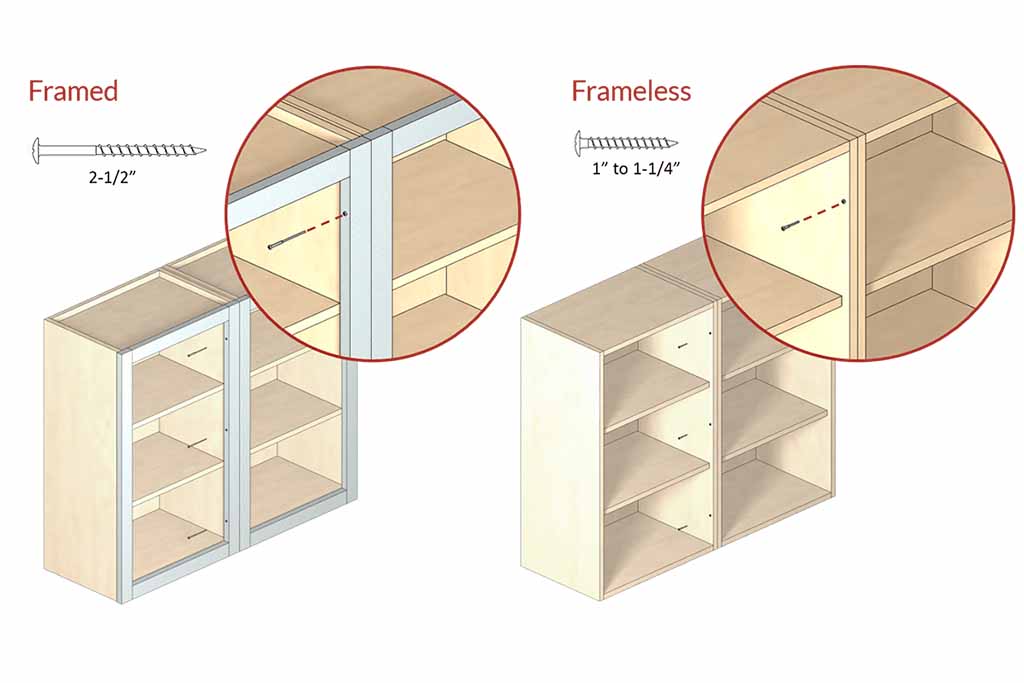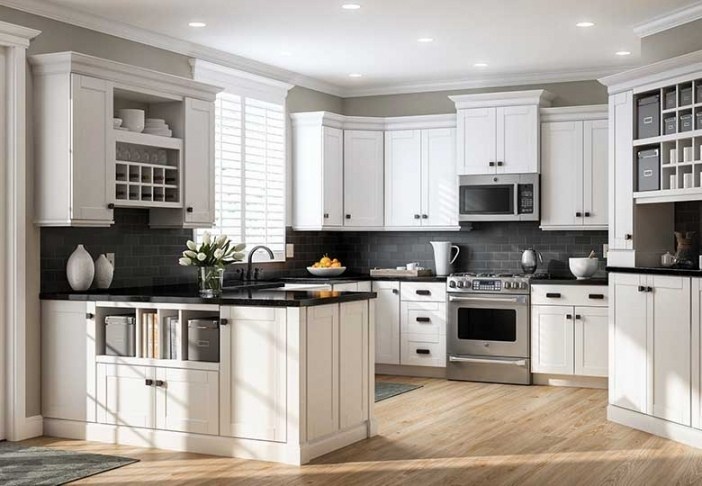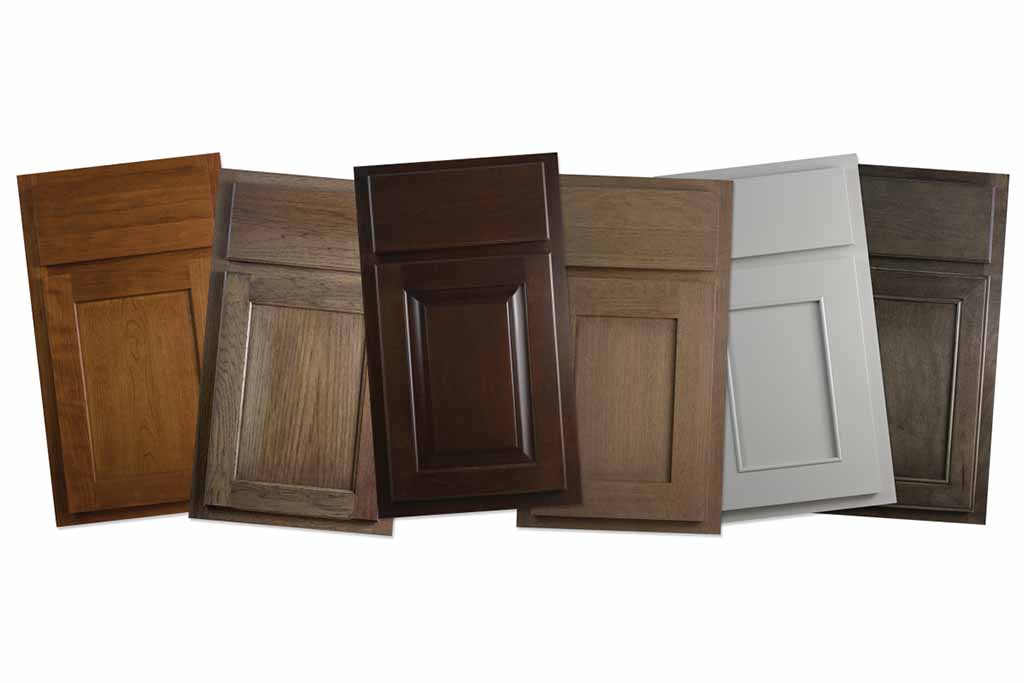

1
Framed vs Frameless Cabinet: Which One is the Best for Your Kitchen
When it comes to kitchen cabinetry, no question gets asked more often than which kind of cabinets should you go for? Framed or frameless? While both come with their unique set of advantages and issues, the ultimate decision usually boils down to your personal preference, budget, and space.
Let’s take a look at what the fuss is all about. Here we will discuss the difference between framed and frameless cabinets and how you can choose the best one for your kitchen.

Table of Contents
What are Framed Cabinets?
As the name suggests, framed cabinets have an additional border or ‘frame’ at the front of the cabinet box. The frame looks like a picture frame with two horizontal pieces of wood called rails connected with two vertical pieces called stiles. Both rails and stiles are usually 11/2 inch wide and 3/4inch thick.

Framed cabinets are also known as American-style cabinets and have been in use for ages. The door of the cabinet is attached to the face frame and sits flush with the door of the cabinet. It is usually attached by using inset hinges.
What are Frameless Cabinets?
Frameless cabinets are a relatively newer addition to the world of kitchen cabinetry. Also called European-style cabinets, these cabinets do not have a face frame. Instead the cabinet door creates the face of the cabinet.

These cabinets are also called ‘full-access’ cabinets since there is no frame on them, accessing the inside of the cabinet is easier. There is also greater storage space in the interior of the cabinet.
Framed vs. Frameless Cabinets
Now that you know the basic difference between framed and frameless cabinets, let’s dive in a little deeper to see how they stack up against each other.
Appearance
Framed cabinets have a classic look. You can choose between three different styles of overlay or frame. In full overlay design, the door completely covers the frame so it is only visible when the door is open. In partial overlay design, you can see part of the frame when the door is shut. While in inset, the doors and drawers lie flush inside the frame to form a smooth, flat surface.

Frameless cabinets have a more modern, contemporary look. The door is flush with the cabinet so the cabinets give off a minimalistic look with crisp lines.
Space
Technically both framed and frameless cabinets have the same amount of storage space inside. However, frameless cabinets are easier to access so they give off the appearance of more open space. Double framed cabinets may have a central stile separating the two which makes accessing the inside of the cabinet all the more difficult.

Installation
Both framed and frameless cabinets are installed in a similar way. Framed cabinets usually come with the frame attached so you only need to mount them. They require longer screws because they must go through the frame.

Frameless cabinetry is still a bit new to the American market, however, it is really simple to install. You need shorter screws for these cabinets as they have no frame. Lower cabinets are installed by placing them beside each other and attaching them to the side walls. Upper cabinets are attached by screwing them directly into the wall.
Costs
Since frameless cabinets need to be made of extra strong material, they cost a bit more than framed cabinets. However, based on labor alone, framed cabinets cost more since more time and effort is required to build them.

Assuming that the style of the cabinet and the kind of material used are the same, frameless cabinets will end up costing around $500 to $1000 more than framed. The cost of installing both types will be the same.
Durability
Since frameless cabinets do not have a frame to support them, they have to be made of stronger wood with thicker sides. This makes frameless cabinets more durable and strong. For the same reason, framed cabinets are usually made of lighter material since they will have the support of the frame.

Framed cabinets can be made of stronger and thicker wood as well but that will drive up the cost and make your cabinets overly bulky. However, if the walls of your kitchen are uneven, then a framed cabinet is less likely to warp as compared to frameless cabinets that are easily pulled out of shape.
Which Cabinet Style is Best for Your Kitchen
Now that you have a good idea of what the cabinets are all about, it is time to choose the right one for your kitchen. Take a look at the pros and cons list of framed and frameless cabinets below to help you decide.
Pros
Cons
Framed Cabinets
- They are less expensive
- There are many style and customization options available
- They can be made using different kinds of materials
- They can be hung on uneven walls
- They may be made of lighter material
- The frame may make it difficult to access the inside of the cabinet
- They offer 1-11/2 inch less space than framed cabinets
- Double cabinets may take longer to install
Frameless Cabinets
- They are sturdier than framed cabinets and made of stronger materials
- They offer more storage space and are more accessible
- Easy and fast to install
- Doors can be easily removed for cleaning by pushing the release button on the door hinge
- They are more expensive
- Less variety in styles and materials of construction
- They warp on uneven walls
- Not suited for wider cabinets
FAQs
1.How to install European hinges on face frame cabinets?
You can install wardrobe hinges or corner cabinet hinges on face frame cabinets by screwing in the hinge to the cabinet door and the mounting plate to the frame. Read more about how to install cabinet hinges here.
2. How to install drawer slides on face frame cabinets?
You can install drawer slides on face frame cabinets by marking both the drawers and the cabinet, installing slides on drawer and mounting plate on cabinet, and sliding the drawer in to click the slide in place. Learn more about how to install drawer slides here.
3. How to build frameless cabinets?
You can easily build frameless cabinets by getting the right kind of wood, cutting it to the dimensions of your cabinet, and using RMG hinges to connect the door and cabinet. Here is a video on how to DIY frameless cabinets.
4. How to build face frame cabinets?
Framed cabinets are a little more time consuming as you have to make the cabinet box, frame, and door separately. Here is a video explaining how to build a simple face frame cabinet from scratch.
5. How to frame kitchen cabinets?
The answer to this question depends entirely on your personal preference. For modern, contemporary kitchens go for inset framing. For a more traditional look opt for either full or partial overlay. Here are some simple face frames and how to measure them.
Conclusion
The right kitchen cabinet can change the look of your entire kitchen. So make sure to choose wisely. Whether you decide to go with framed or frameless cabinets, it is important to choose the right hardware to connect them so they last you ages. Take a look at our catalog of hinges, drawer slides, including under-mount slides and telescopic extension slides, and kitchen storage fitting solutions to get the best kitchen hardware in the market.
RMGHardware is a professional cabinet hinge manufacturer who works closely with various well-known furniture brands, check out our blogs for tips and tricks around furniture hardware! Or contact us if you need help with sourcing hinges.